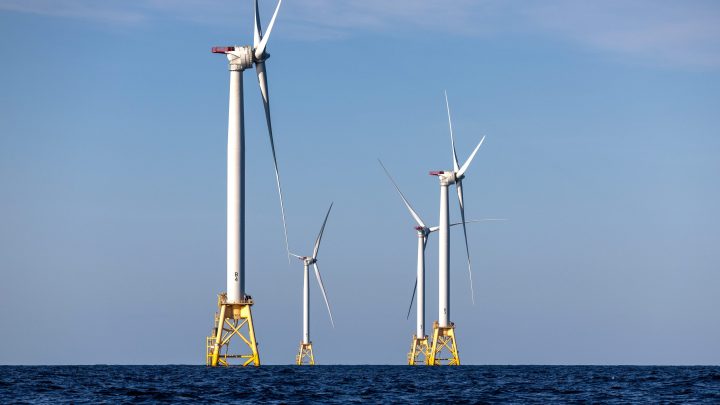
As one new offshore wind project is approved, two others are canceled — for now
As one new offshore wind project is approved, two others are canceled — for now

Some mixed news for offshore wind this week: The Biden administration just approved another big wind farm, set to be built off the coast of Virginia Beach. It’s the fifth commercial-scale offshore wind project the administration has approved as part of its goal to have 30 gigawatts of offshore wind energy capacity in operation by 2030.
But these projects are running into opposition, and all sorts of financial and logistical challenges, even once they’ve gotten federal approval. Case in point: Orsted, a major wind developer, announced this week that it’s pulling out of two major projects it’s been planning off the coast of New Jersey.
When the pandemic started, Abe Silverman was about to redo his kitchen.
“And you know what, when those prices started going up, we stepped back, and the contractor stepped back,” Silverman said.
Silverman, at Columbia’s Center on Global Energy Policy, said that’s effectively what happened with Orsted pulling out of those two big wind projects. The company had bid on them before the pandemic and the war in Ukraine caused major supply chain issues, and before prices — and interest rates — started to rise.
Now, the company has decided the math doesn’t work anymore.
“The problem is building these projects. They’re very, very expensive, almost all big, clean energy projects are capital intensive,” said David Victor at UC San Diego.
Victor said building offshore wind projects, in particular, also takes a long time. Which means a lot can change.
This time around, “two things have changed. One is that siting has proved more challenging, siting and interconnection with the grid. That delays these projects. The other thing, much more important, is that interest rates have gone up,” Victor said.
And it’s all just become much more expensive.
But inflation, interest rates and supply chain issues aside, Kris Ohleth at the Special Initiative on Offshore Wind said offshore wind is also just harder to build and connect to the grid than other renewables, at least right now.
“And that is because offshore wind is a nascent industry here in the United States. It’s still a relatively new technology, and therefore the supply chain is very new, the interconnection concepts are very new, we don’t have a well-heeled permitting structure and regulatory regime,” Ohleth said.
Solar and onshore wind, meanwhile, have been around longer and have already worked through more of those growing pains.
Abe Silverman at Columbia said he thinks offshore wind will, too, in time. And that the economic factors at play now won’t always be a barrier.
“I think there’s a strong case to be made that this is a blip that will not necessarily dim the long-term prospects for offshore wind,” Silverman said.
Partly, he said, because it will be hard for the U.S. to decarbonize without it.
There’s a lot happening in the world. Through it all, Marketplace is here for you.
You rely on Marketplace to break down the world’s events and tell you how it affects you in a fact-based, approachable way. We rely on your financial support to keep making that possible.
Your donation today powers the independent journalism that you rely on. For just $5/month, you can help sustain Marketplace so we can keep reporting on the things that matter to you.

















